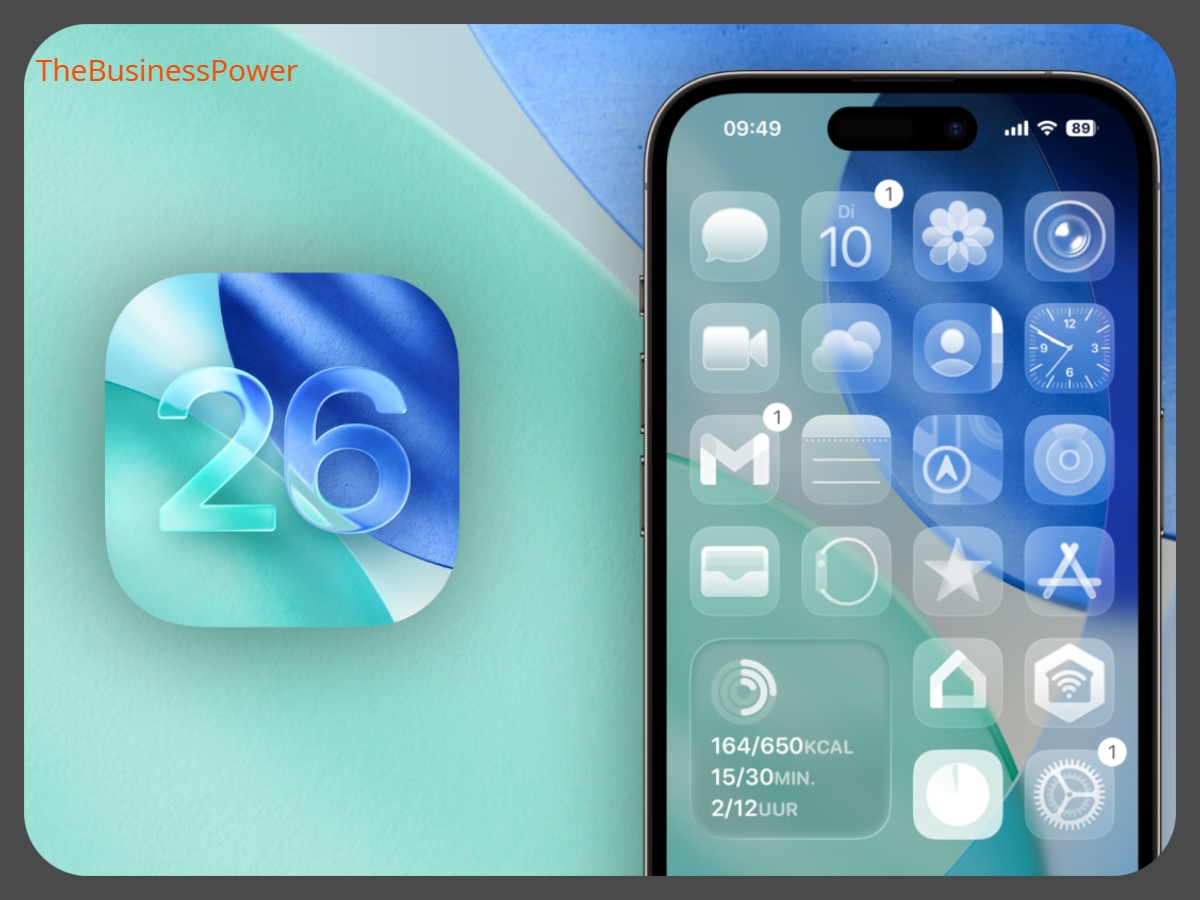Apple has just unveiled iOS 26 featuring “Liquid Glass” – the most significant visual overhaul to hit iPhones and iPads in over a decade. This groundbreaking design system promises to reshape how we interact with our devices, moving beyond the flat design era into something entirely new.
What is Liquid Glass in iOS 26?
Liquid Glass represents Apple’s bold new design philosophy that makes user interface elements appear translucent and dynamic. Think of it as looking through a crystalline pond – buttons, menus, and toolbars now refract and reflect the colors of the content beneath them, creating an almost holographic experience.
This isn’t just about aesthetics. The translucent design system manipulates opacity across all interface elements, making them feel more integrated with the content you’re viewing. When you touch and interact with these elements, they respond with satisfying tactile feedback that Apple describes as having a “synthetic bounce.”
Key Features of iOS 26 Liquid Glass Design
Enhanced Visual Experience
- Translucent interface elements that adapt to underlying content
- Dynamic color reflection that changes based on what’s displayed
- Improved depth perception with layered visual effects
- Holographic-style interactions that feel more immersive
New Functionality Additions
- Beat-matching audio mixing for enhanced music experiences
- Intelligent Order Tracking for seamless package monitoring
- iPad Windowing that makes iPad interfaces resemble mobile Mac
- Call Screening tool that filters unknown callers
- Live Translation for real-time communication
- Spatial Scenes that add depth to 2D photos
Customization Options
- Emoji and color folder customization
- Group chat polling features
- Customizable snooze durations
- Enhanced Live Activities for cross-device synchronization
Why Apple Chose Liquid Glass Over AI Focus
While many expected Apple to announce major AI advancements at WWDC 2025, the company chose to focus on user experience design instead. Apple’s design team, led by Alan Dye and Craig Federighi, believes that AI should enhance interfaces rather than dominate them.
This decision reflects Apple’s philosophy of making technology feel more human and intuitive. Rather than competing in the “chatbot arms race,” Apple is betting on creating delightful user experiences that seamlessly integrate AI capabilities behind the scenes.
The Technology Behind Liquid Glass
The Liquid Glass design system draws inspiration from Apple’s work with the Vision Pro mixed reality headset. This connection isn’t coincidental – Apple appears to be preparing for a future where digital interfaces overlay the physical world through smart glasses or other augmented reality devices.
The translucent design makes sense in this context: if users will eventually view software overlaid on the real world, that software needs to be see-through. iOS 26’s Liquid Glass could be Apple’s way of gradually introducing users to interface concepts that will become essential for future AR/VR products.
Impact on User Experience
Improved Usability
The new design maintains Apple’s commitment to intuitive functionality while adding visual appeal. Users report that the interface feels familiar yet refreshing, with the translucent elements adding depth without complicating navigation.
Enhanced Accessibility
Despite the visual complexity, Apple has ensured that Liquid Glass maintains excellent legibility and meets accessibility standards. The design team spent considerable time ensuring that the translucent effects don’t interfere with readability or usability for users with different visual needs.
Cross-Device Integration
iOS 26 works seamlessly across iPhone, iPad, Apple Watch, and Apple TV, creating a unified experience that feels consistent regardless of which device you’re using.
Developer Opportunities with iOS 26
Apple has opened up its on-device AI framework, Foundation Models, to developers for free. This means third-party apps can integrate AI capabilities while maintaining the new Liquid Glass aesthetic. Developers can now create apps that feel native to the new design system while leveraging powerful AI features.
Release Timeline and Availability
iOS 26 follows Apple’s new naming convention where the number represents the year of release. The update will be available across all compatible devices, though specific release dates and device compatibility details are still being finalized.
User Reception and Industry Response
Initial reactions to Liquid Glass have been mixed, with some users praising the innovative approach while others question the departure from familiar design patterns. However, Apple executives report positive feedback from hands-on demonstrations, suggesting that the design needs to be experienced rather than just viewed in screenshots.
Industry analysts see this as Apple’s attempt to differentiate itself in an increasingly crowded tech landscape, particularly as AI capabilities become commoditized across different platforms.
Looking Ahead: The Future of Apple Design
Liquid Glass represents more than just a visual update – it’s Apple’s vision for how we’ll interact with technology in the coming decade. As the lines between digital and physical reality continue to blur, interfaces that can seamlessly blend with our environment become increasingly important.
The design system’s emphasis on transparency and adaptability suggests Apple is preparing for a future where our devices become even more integrated into our daily lives, potentially disappearing entirely as separate objects and becoming ambient parts of our environment.
Conclusion
iOS 26’s Liquid Glass represents Apple’s most ambitious design update since the move away from skeuomorphism in 2013. While it may take time for users to fully appreciate the new aesthetic, the underlying technology and design philosophy point toward an exciting future for human-computer interaction.
Whether you love or hate the new look, there’s no denying that Liquid Glass pushes the boundaries of what’s possible in mobile interface design. As we move toward an increasingly digital world, Apple’s bet on translucent, adaptive interfaces may prove to be prescient.
The real test will be how users adapt to and embrace this new design language in their daily device usage. If history is any guide, what seems revolutionary today may become the new standard tomorrow.

